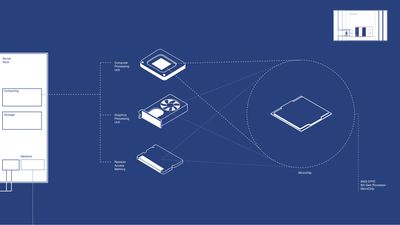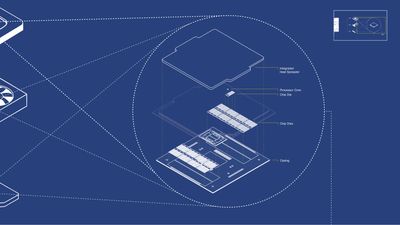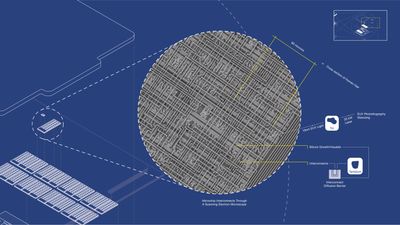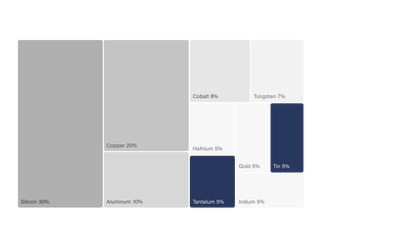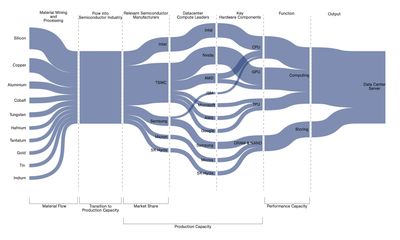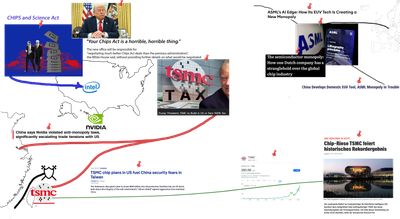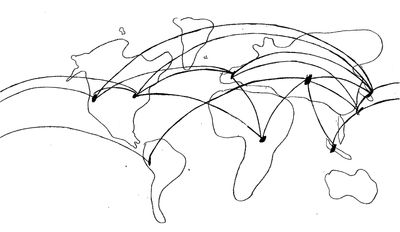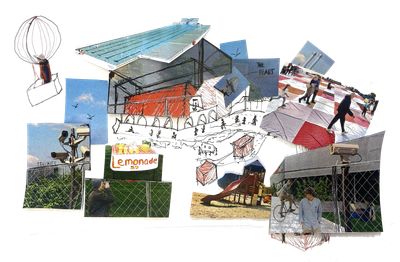AtlasNetworks: Storing and ProcessingLena Good, Aqil Durrani, Gabriele Zanni, and Omar El Sayed
The data centre OIZ (Organisation und Information Zürich) is located in the centre of Zurich. It is surrounded in the north by the Stadion Utogrund and by a small scale housing neighbourhood. The grey metal façade covering the exterior leaves a uniform expression on the former Siemens industrial site. Today, no telephone components are assembled but data is stored from various branches of the city of Zurich and rental space that is occupied by banks such as Julius Bär, Vontobel and the Swiss National Bank. Although the imprint of the building is large, little attention is paid to it and it often remains invisible, likewise the inside. In this work, we will look at the different spatial and technological layers of a data centre which reveal the processes and materials behind data storage.
It's All Just Ones and Zeroes
A datacentre’s logic follows the logic of an onion. After layers of security, power and cooling, we reach the blinking lights of servers on racks. The rectangular cubes fill hallways like supermarket shelves— each their own complex layer of components of power, cooling, security and crucially, computing and storage. There is maximal efficiency on every square metre, leaving only a passage for workers in a windowless generic room engineered for efficiency.
When zooming in, the main components of a server’s computing capabilities are revealed: a computer processing unit, a graphics processing unit and a random processing unit. If we look further into the makeup of these components, we find microchips at the core of their functions. The structure of a microchip’s surface is a maze of wires and silicon growth. Tantalum (Ta), utilised in the interconnects, and Tin, utilised in the manufacturing process, are two materials we will explore in the following chapters.
Having zoomed into a state beyond what the human eye is capable of seeing. We lose sight of its physicality. In the end it is just a mechanism of binary ones and zeros that enables the network to communicate with other similar mechanisms of data storage and computing processes such as personal computers or other data centres.
Behind the Ones and Zeros


The extractive industry of server components. Drawing: Aqil Durrani, 2025.
Global tantalum production involves various countries, processes, and companies. For the hypothesis we have formulated, we have focused on three of the major countries involved: DR Congo, China, and Taiwan. These three countries are linked by a common thread involving various international transport routes that allow for an uninterrupted flow. Each country specialises in certain tantalum production processes that are interdependent. During our research, it became clear to us that of these three countries, the Democratic Republic of Congo is the one with the most serious social problems.

Some of these social issues occur in tantalum mines in the DR Congo, highlighting very serious situations that require immediate action. Here, work is often carried out in extremely harsh conditions, with forced labor, child labor, and very low wages. Profits are captured by armed militias or corrupt networks, while local communities receive few economic benefits despite the exploitation of their land.

Other problems arise during the local processing of tantalum in the DR Congo. Workers often operate in dangerous conditions where it lacks adequate safety standards, and are therefore exposed to toxic substances. Processing is carried out using rudimentary tools and in makeshift environments, increasing health risks. Despite the intense labor, the economic benefits remain minimal for local communities.
These issues highlight the hidden side of an industry that, at first glance, appears extremely modern and technologically advanced. Behind the production of chips, which are essential for our everyday devices, lie profound social and economic injustices that affect thousands of people. Difficult working conditions, exploitation, and the absence of protections show how technological progress is not distributed fairly and how many lives are seriously compromised to sustain the supply chain of the chip.

Tin, which comes from the island of Belitung, an island off the coast of Indonesia, is used in the manufacturing process of micro chips known as extreme ultraviolet (EUV) litography. The open-pit mining, supplying 90% of Indonesia’s tin export, and linked deforestation cause a slow but painful degradation of the island’s greenery. The people behind this process are not spared, being subject to harsh and dangerous working conditions. Studying the extraction of tin and tantalum, we see the effects of an extractive industry on a local scale which also reveals that the digital world is physical and extractive in nature.
Tolerated Damage
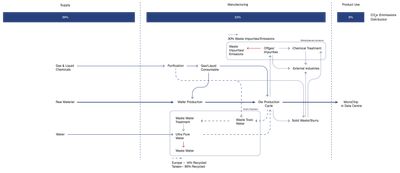
Re(sourcing), Source: Julia Christina. Drawing: Aqil Durrani, 2025.
Many might know the data industry is power hungry, but the manufacturing process of the individual components often goes unnoticed. The microchip manufacturing industry itself contributes to around 1 % of the global carbon emissions. Surprisingly, if we look at the data centres’ specific microchip sector, we find that the bulk of the emissions come from the manufacturing (53 %) and supply side (39 %), rather than the actual usage of these chips themselves. This is down to two factors: the utilisation of clean energy sources by data centres during operation and more importantly, the vast amount of materials that go into the manufacturing of these chips as well as the waste involved.
If we take a closer look at the inputs and outputs of the production cycle, we find that not only are the raw materials going into the making of these chips, but tons of chemicals and water as well, leading to waste outputs that often have their own impact on the environment. In the cycle we can find loops of waste and recycling, highlighting different approaches and methods in the manufacturing processes.
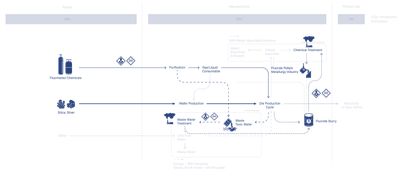
Tolerated Damage. Source: Julia Christina. Drawing: Aqil Durrani, 2025.
Recycling within the industry, be it for internal reuse such as water, or for external reuse by other industries after treatment might seem like a huge positive, but it comes with its own sets of challenges. If we trace the path of fluorinated chemicals, for example, a heavily utilised chemical in the cleaning of the microchip layers, we find it being reused in the metallurgy industry as fluoride pellets.
The reuse of these chemicals requires specific treatments that release large amounts of emissions themselves. Here we can begin to ask if the good justifies the bad, and more importantly, if drastic change is needed to solve this dilemma of seemingly tolerated damage.
Winners and Losers
Modern data centres—the computational core of today’s digital infrastructure—rely on a deeply interconnected global value chain. This process begins with the extraction and processing of raw materials such as silicon, copper, aluminum, cobalt, and tungsten. These resources constitute the physical foundation of semiconductor manufacturing.
Once refined, these materials enter the semiconductor industry, where companies like TSMC, Intel, and Samsung transform them into micro chips through highly specialised and capital-intensive processes. TSMC dominates this sector as the world’s largest contract chip manufacturer, fabricating designs for clients such as Nvidia, AMD, and Apple. Intel, in contrast, continues to pursue an integrated model, handling both design and production internally.
The ecosystem further extends to the realm of large-scale cloud providers. Google, Microsoft, and Amazon Web Services increasingly design their own processors—such as Google’s Tensor Processing Unit (TPU)—to optimise performance for specific computational workloads. Together, these components form the technological backbone of modern data centres, enable two fundamental functions: computing and data storage.
This layered structure illustrates how material flow, production capacity, and computational performance converge into a single output: the data centre server—a node of both industrial complexity and strategic dependence.
The semiconductor industry is not only a technological network but also a geopolitical battleground. At its center stands Taiwan’s TSMC, responsible for producing more than half of the world’s advanced chips. Taiwan’s pivotal role has made it a focus of tension between China and the United States—two powers competing for dominance in digital and technological infrastructure.
In response to the vulnerability of global supply chains, the US introduced the CHIPS and Science Act, a multi-billion-dollar initiative to strengthen domestic semiconductor manufacturing. By incentivising companies like Intel and Nvidia to build fabrication plants on American soil, the US seeks to reduce dependency on Asian production hubs. However, these measures have also intensified trade disputes: China has accused Nvidia of violating anti-monopoly laws, while the US has pressured TSMC to expand its operations in the United States.
Meanwhile, Europe maintains a unique strategic position through ASML, the Dutch company holding a near-monopoly in Extreme Ultraviolet (EUV) lithography technology–essential for advanced chip fabrication. Yet, China’s accelerated efforts to develop domestic EUV tools threaten to erode this European advantage, signaling the beginning of a new phase of technological competition.
Ultimately, the semiconductor ecosystem exemplifies how deeply technological innovation and geopolitical power have become intertwined. What was once a question of industrial capacity has evolved into a matter of national security, economic sovereignty, and global influence.
Re-Understanding and Reimagining
Through the process of exploring the heartware of a data centre, several talking points can be put forth. We see an isolated entity, removed from any trace of relation to the site when we zoom in and find ones and zeroes at the basis of what data is. Yet there is an irony to this isolation in the vast and interconnected complex network of labour and material that drive these data centres–and that’s just looking at a micro chip. It can be said that there is an underlying narrative of the impossibility of locality when it comes to these data centres in how it is understood and conceived of today.
The extractive industry and the tolerated damages brings forth the question: what is the limit? The effectiveness of not only micro chips, but other components as well in layers that make up a data centre, continues to rise with technological advancements, yet the scale of these data centres continue to rise. The demand for these data centres far exceeds the growth of effectiveness of these technologies. The miniaturisation of computing power and technology has created a paradox of growth instead, leading to inevitable increasing resource drain. Can the script be flipped and the future be re-understood?
Once this idea of a data centre and its inevitability of non-locality is re-understood and questioned it can then be reimagined. The data centre is fashioned by its own parameters, of how it operates and understood by those who operate them—isolated, global, extractive. However, can we reimagine the data centre as a spatially fragmented typology, and instead envision a space whose location and surroundings matter again.



